Ausbauhaus Südkreuz / Berlin 2022
Regenerativ / Gemeinschaftlich
Status
Fertiggestellt August 2022
Programm
Klimafreundlicher Neubau Mehrfamilienhaus, inkl. Gemeinschaft & kiezgebundenes Gewerbe
Ort
Gotenstraße 45
10829 Berlin-Schöneberg
10829 Berlin-Schöneberg
Größe
BGF 2.200 m2
Wohneinheiten
18
Leistungen
Konzeptverfahren & LP 1-8
Bauherren
Baugruppe Südkreuz GbR
Konstruktion
Holz-Beton-Hybridbauweise, verbundstofffreie Holzständerwerk Fassade mit vorgehängter Lärchenverschalung
Kreislaufgerechter Ausbau aus nachwachsenden Rohstoffen
Kreislaufgerechter Ausbau aus nachwachsenden Rohstoffen
Nachhaltigkeit
KfW 40
Team
Philipp Dittus, Andreas Friedel, Tamara Granda, Max Mütsch, Paul Zöll
Partner
Tragwerksplanung
Bauphysik / EnEV
TGA
Landschaftsarchitektur
Schallschutz
Projektsteuerung
Tragwerksplanung
Bauphysik / EnEV
TGA
Landschaftsarchitektur
Schallschutz
Projektsteuerung
Janitz Ingenieure
CLKT Ingenieure
PSW Ingenieure
Hutterreimann Landschaftsarchitektur
Akustikbüro Moll
Müller Rose Projektsteuerung,
L.I.S.T. Projektsteuerung
Gemeinschaftlich. Ökologisch. Bezahlbar.
Im Rahmen des Konzeptverfahrens „Schöneberger Linse“ hat die Baugruppe 2019 den Zuschlag für das Grundstück erhalten. Eine Mischung aus Eigentumswohnungen, geförderten Mietwohnungen und kiezgebundenem Gewerbe ist auf 6 Etagen untergebracht. Der über die gesamte Breite der Fassade laufende Austritt und die bodentiefen Holzfenster erweitern den Wohnraum großzügig nach außen.
Neubauten von heute werden in Zukunft nicht mehr abgerissen und entsorgt, sondern materialbewusst modernisiert oder umgebaut. Darum sind die Materialien des in Holz-Beton-Hybridbauweise errichteten Gebäudes adäquat zu ihrem Lebenszyklus eingesetzt: Die im dichten urbanen Kontext positionierte dauerhafte Tragstruktur ist in Beton errichtet und ermöglicht auf Dauer eine hohe Nutzungsflexibilität. Die Fassade ist komplett als rückbaubare Holzkonstruktion ausgeführt und mit vorvergrauter Lärchenschalung vor der Hinterlüftungsebene verkleidet.
Der Innenausbau der Wohnungen als kurzlebigster Teil des Hauses wurde weitestgehend verbundstofffrei und mit nachwachsenden Baustoffen umgesetzt. Für die Zimmerwände in den Wohnungen wurde nach diesen Prinzipien eigens eine trocken montierbare Holzständerwand entwickelt. Die Materialien werden sicht- und lösbar verschraubt, gelegt, gesteckt und können wieder abmontiert und an anderer Stelle wieder eingesetzt werden. Oberflächen bleiben teilweise unbehandelt oder werden wohngesund lasiert. So wird zukünftig der einfache Umbau von tragwerkunabhängigen Bauteilen oder bei einer Modernisierung eine sortenreine Trennung der Materialien möglich.
Common. Ecological. Affordable.
The collective housing initiative was awarded the small plot in a concept competition organised by the city of Berlin. The 7 floors provide 13 owner-occupied flats, 3 subsidised rental flats and 2 neighbourhood-related uses. Flats range between 38 and 130 sqm and are laid out in 2 or 4 units per floor. The French balconies stretching across the entire facades and the wooden French windows create generous connections to the outside. The eligible flats and the community-oriented ground floor were co-financed by the building initiative. The 4.5-metre-high ground floor houses a neighbourhood lounge for cultural and social exchange and a training room for start-up seminars. The top floor provides a small guest flat and a shared roof terrace.
Today's new buildings will no longer be demolished or disposed of in the future but modernised and converted with an awareness of materials. Since circumstances can change quickly, the "short-term" conversion of the units is likely and necessary to ensure the long service life of a building. Hence, the building elements of the timber-concrete hybrid structure are used according to their lifecycle:
The load-bearing structure (fire walls, slabs, circulation core) in the dense urban context is built in concrete and ensures a lasting high flexibility of the column-free units.
The facade is a demountable, rear-ventilated timber framework and holds the wood-fibre insulation and the pre-aged larch cladding.
The interior fit-out of the flats, the shortest-lived part of the house, is free of composites and made of renewable materials. The floor is based on a dry-mounted structure with an unbound levelling fill of wood chips. The custom-designed dry-mounted interior walls made of timber studs, visibly clad with wood and clay panels—an ecologically worthwhile alternative to conventional drywalls—create a high quality of living.
Facade and fit-out materials were screwed, plugged in, laid or poured in a visible and detachable manner. Most surfaces are untreated or finished with a non-hazardous glaze. This construction avoiding composites facilitates future conversions, modernisation or dismantling of components that are independent of the load-bearing structure. Screwed wooden elements can be removed, worked up and reinstalled in the same or in other buildings. Wood wool panels and the unbound fill in the floor can be removed and reused.
This not only creates a valuable store of materials, but also, over decades, a more cost-effective alternative to currently common composite constructions. Building without glued and filled material layers implements the idea of recyclability, i.e. building materials can be reused and kept in the longest possible cycles (re-use effect).
Besides the timber-concrete hybrid construction, the project achieves the KfW 40 energy standard (biogas heating). Bird breeding boxes were integrated into the facade, the green roof is used for beekeeping. Specially designed wooden windows and elements provide sound insulation against the nearby motorway.











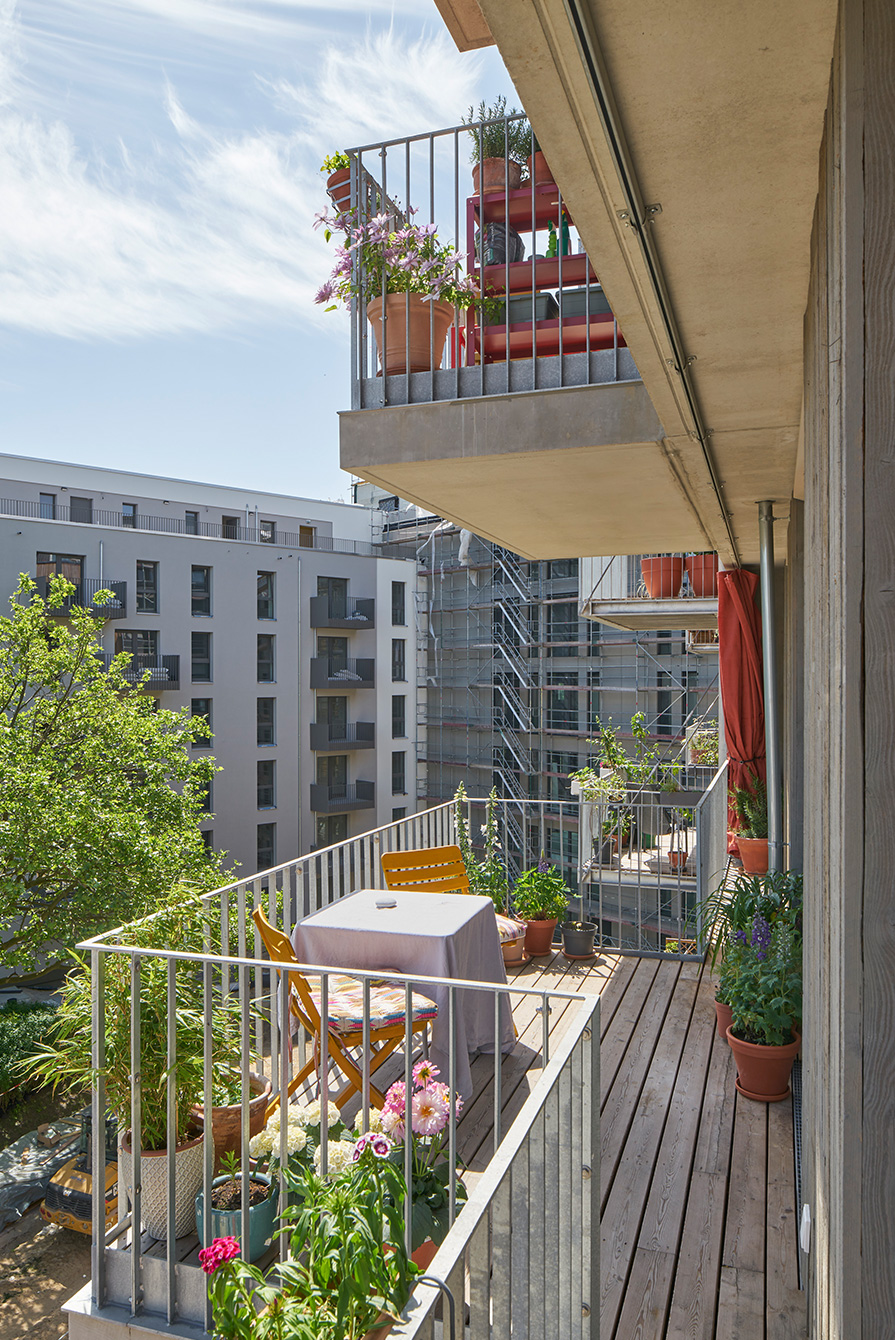









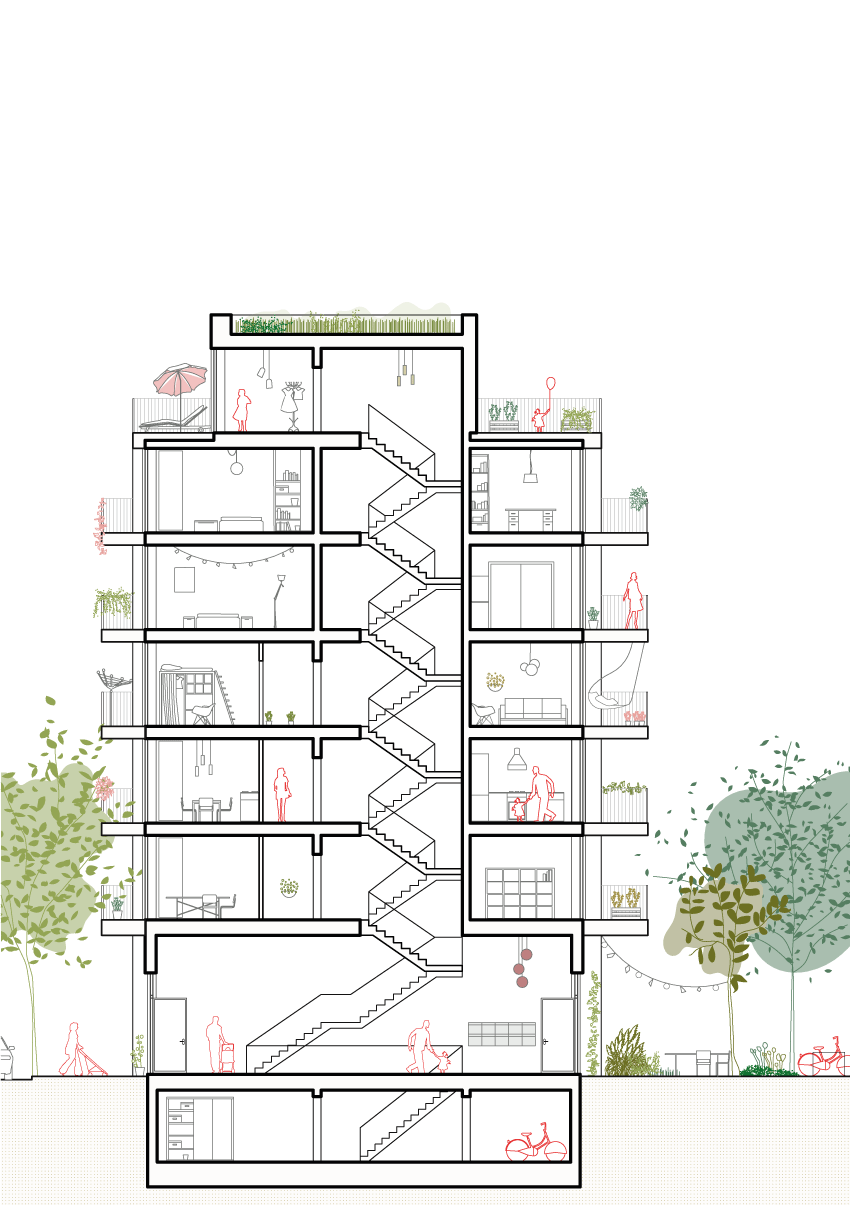
Schnitt
 Erdgeschoss
Erdgeschoss
1. Obergeschoss

Dachgeschoss

Veröffentlichungen
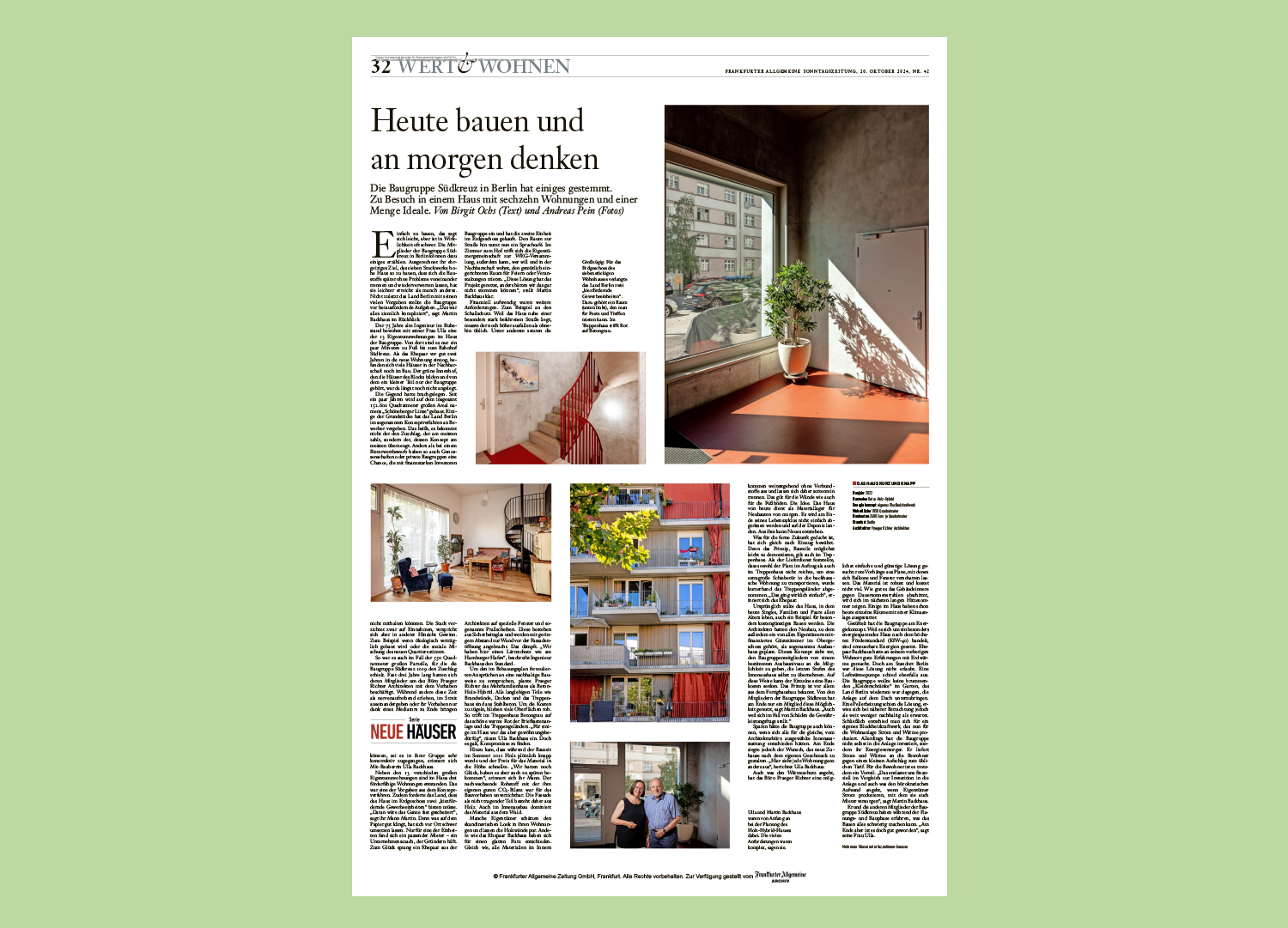 NEUE HÄUSER
Heute bauen und an morgen denken
NEUE HÄUSER
Heute bauen und an morgen denkenFAZ
26.10.2024
︎︎︎
 HOLZHÄUSER IN DER STADT
HOLZHÄUSER IN DER STADTWarum gerade in Berlin so viele Holzbauten entstehen
AD Magazin
22.10.2024
︎︎︎
 HEINZE AWARD
HEINZE AWARDShortlist
2024
︎︎︎
 AUSBAUHAUS –
AUSBAUHAUS –Sieht so die Zukunft des Bauens aus? Neubaukompass Berlin
14.08.2024
︎︎︎
 DEUTSCHER BAUHERRENPREIS
DEUTSCHER BAUHERRENPREIS
Nominierung
2024 ︎︎︎
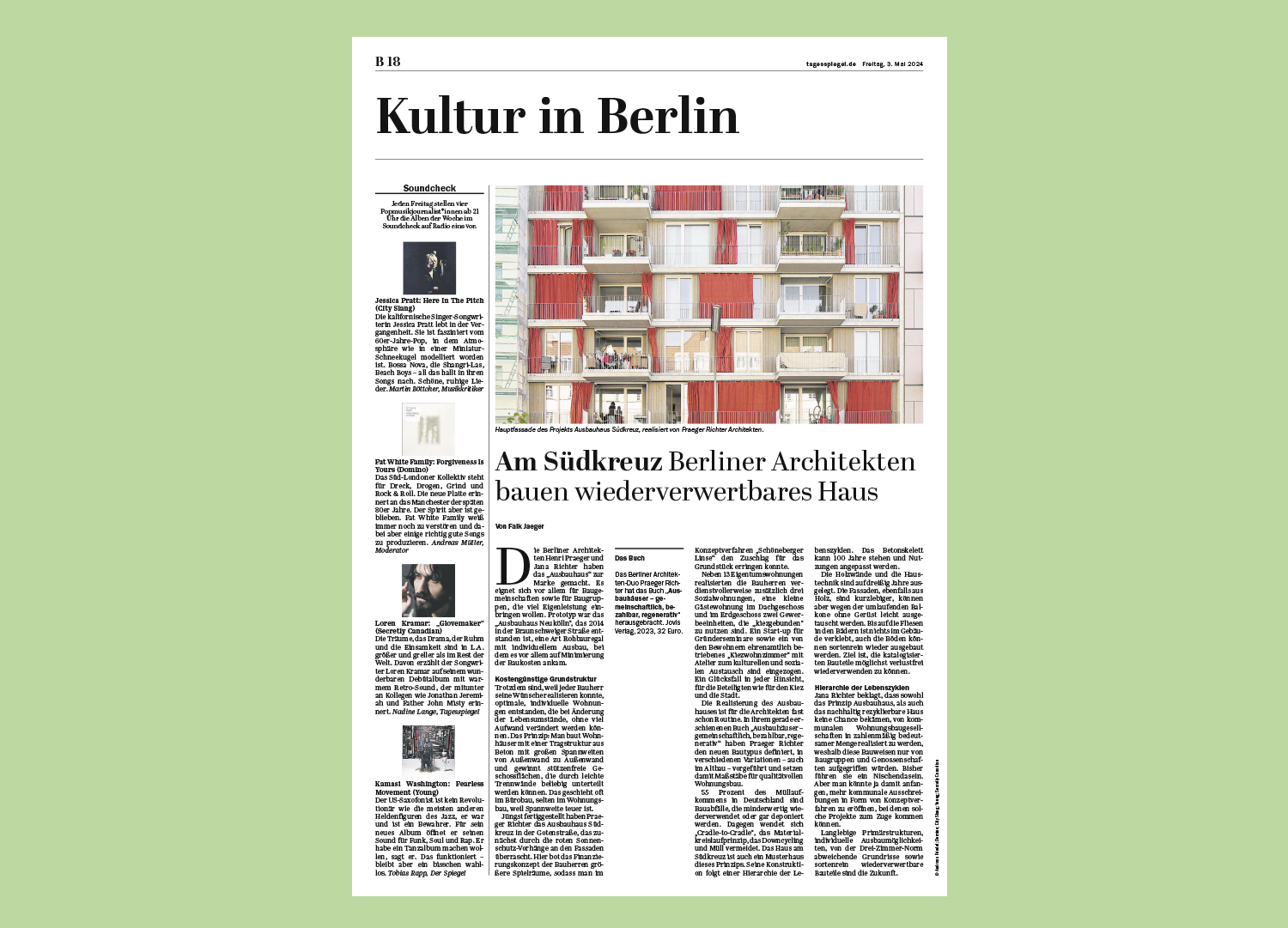 ZUKUNFT DES WOHNUNGSBAUS
ZUKUNFT DES WOHNUNGSBAUS Berliner Architekten bauen wiederverwertbares Wohnhaus Tagesspiegel
02.05.2024
︎︎︎

EU MIES VAN DER ROHE AWARD
Nominierung
2024
︎︎︎
 AUSBAUHAUS AM SÜDKREUZ
AUSBAUHAUS AM SÜDKREUZDas Ausbauhaus Südkreuz kalkuliert mit dem gesamten Lebenszyklus Bauwelt
15.08.2023
︎︎︎
 POLIS AWARD 2023 VERLIEHEN
POLIS AWARD 2023 VERLIEHENZusammen im Bestand
Baunetz
27.04.2023
︎︎︎
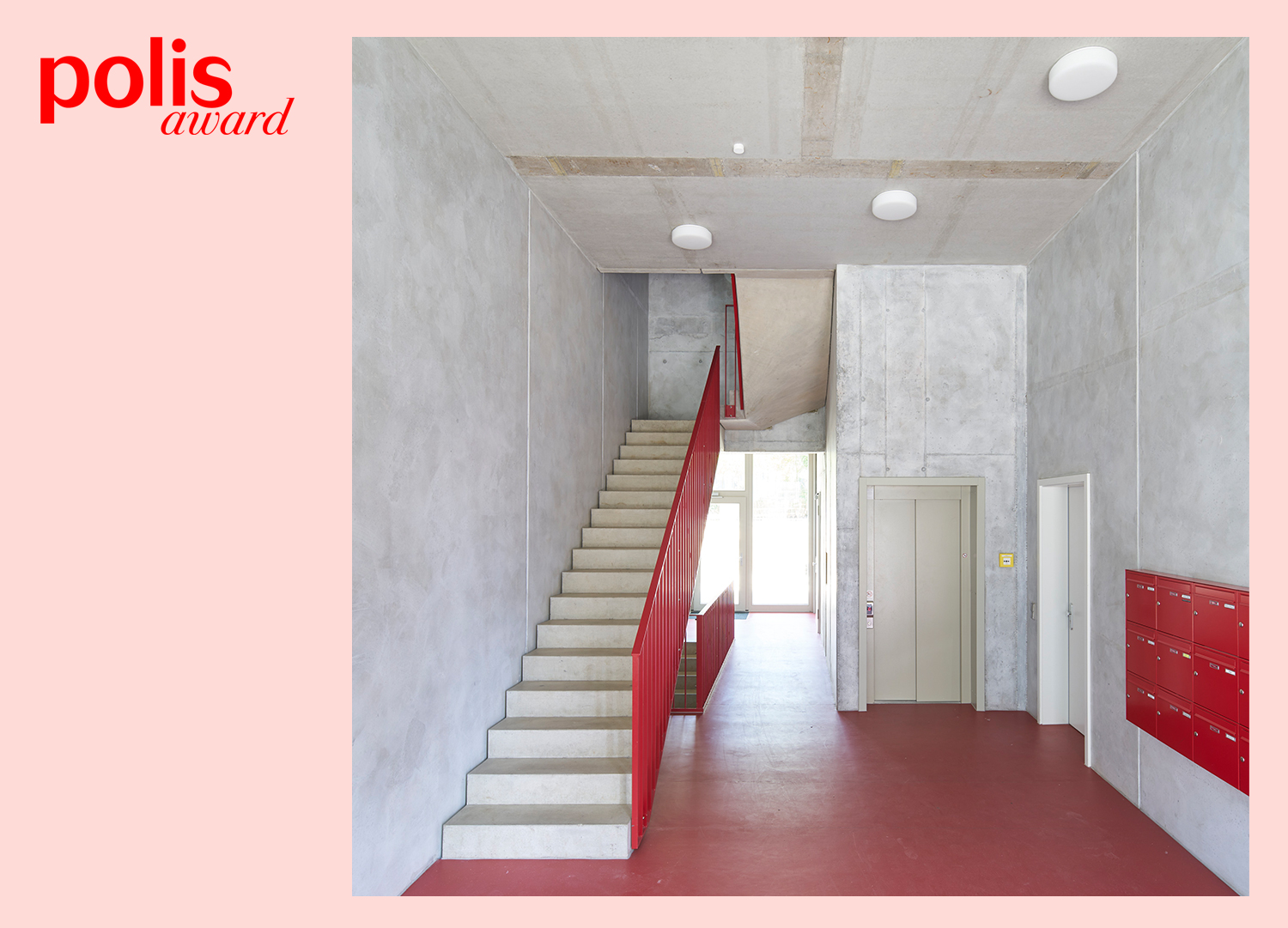 POLIS AWARD
POLIS AWARDÖkologische Wirklichkeit
1. Platz
2023
︎︎︎
 DAM PREIS
DAM PREISShortlist
2023/24
︎︎︎

HÄUSER AUS PFLANZEN
Bundeswettbewerb HolzbauPlus 2022/23 Anerkennung
Baunetzwoche #625
27.07.2023
︎︎︎
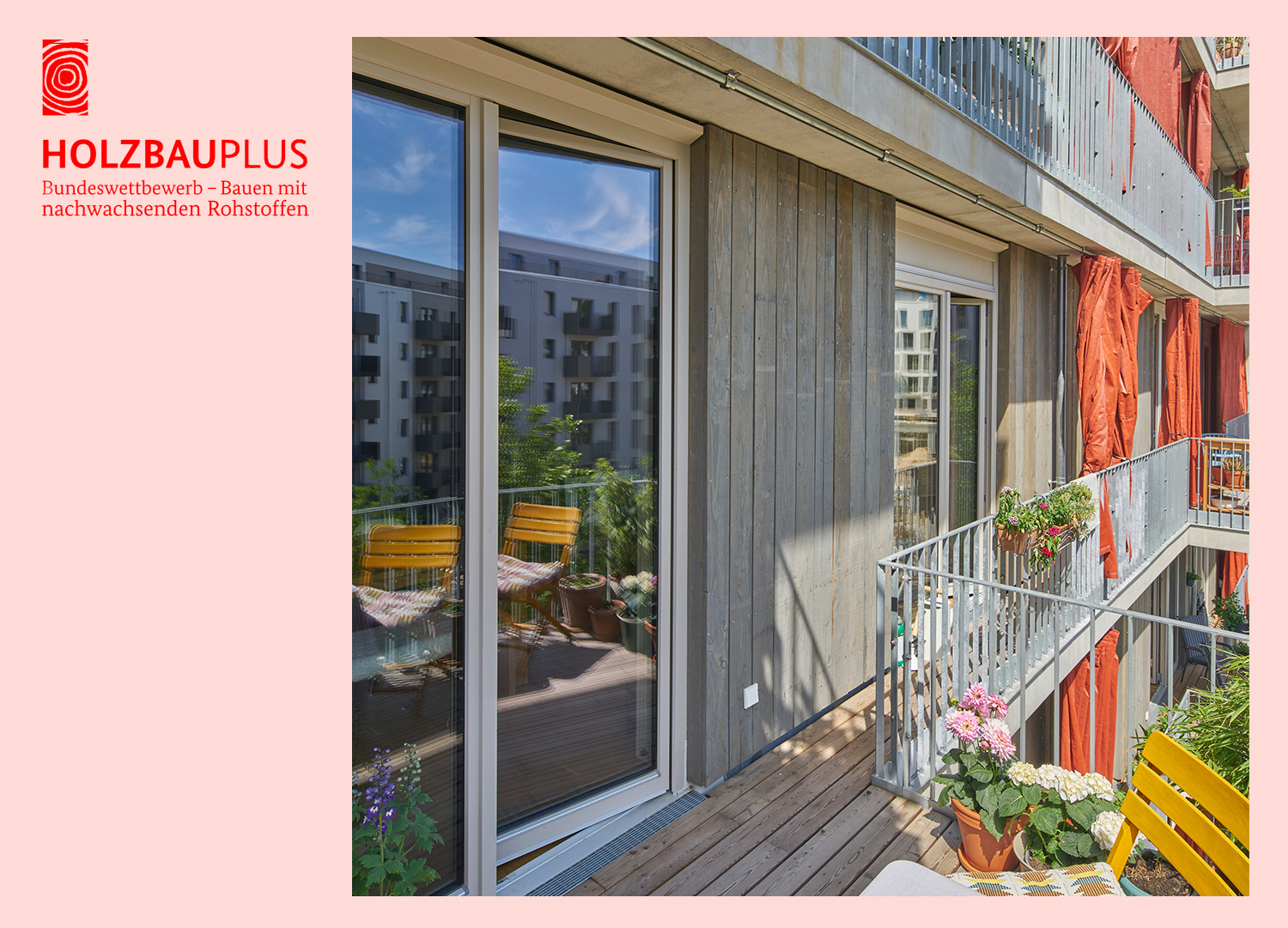 HOLZBAUPLUS
HOLZBAUPLUSRecyclingkonzepte mit Naturbaustoffen
Anerkennung
2023
︎︎︎
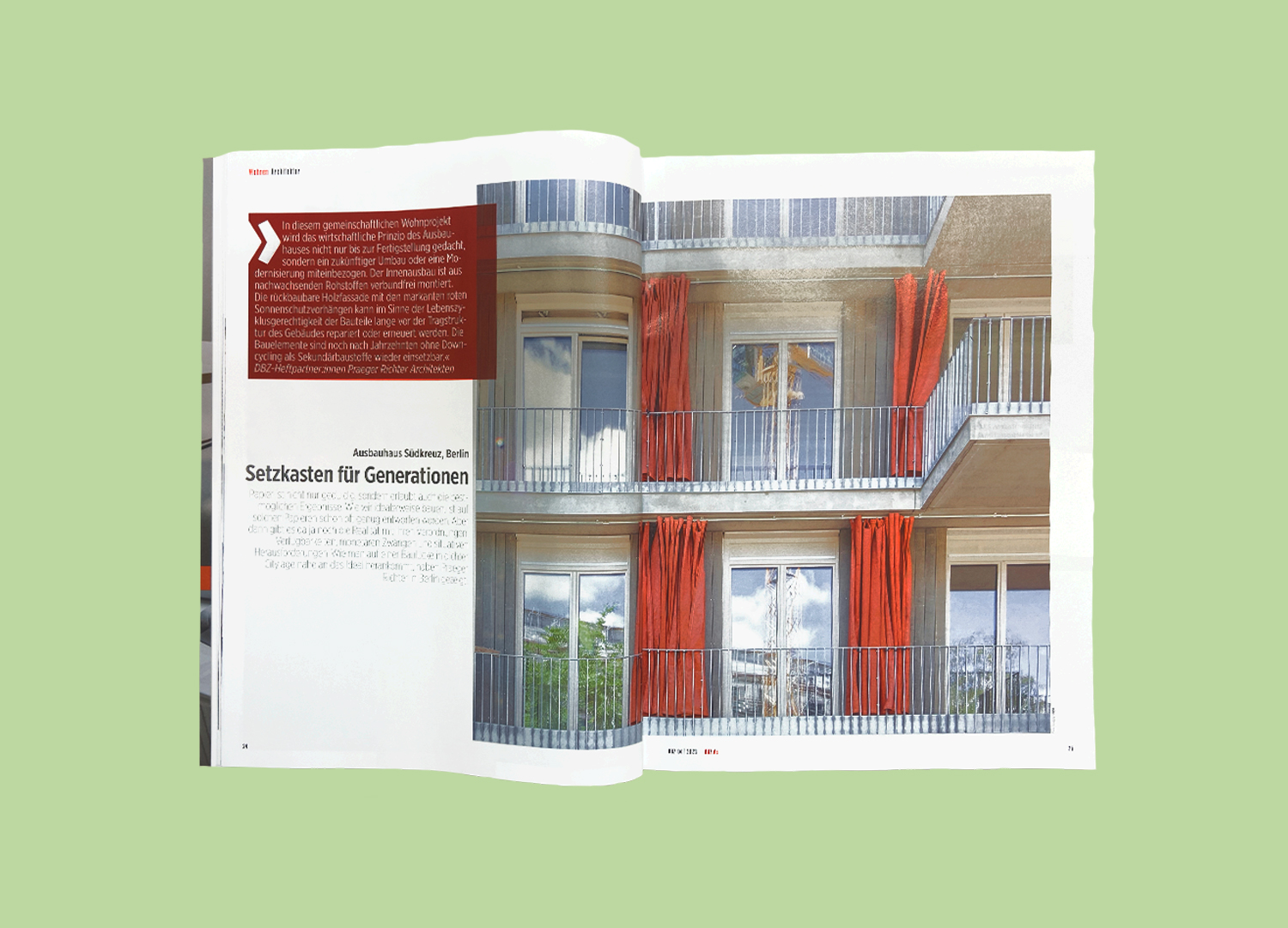
SETZKASTEN FÜR GENERATIONEN
Ausbauhaus Südkreuz Berlin
Heftpartnerschaft 04/23 Wohnen
DBZ
28.03.2023
︎︎︎
 PLÄDOYER FÜR UMBAUKULTUR
PLÄDOYER FÜR UMBAUKULTUR Wohnhaus in Berlin von Praeger Richter Architekten
Baunetz
08.07.2022
︎︎︎
